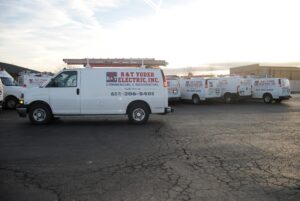
Lighting is one of the most impactful design elements in any space. It affects mood, productivity, safety, and even the perceived size of a room. In both residential and commercial environments, efficient light installation ensures proper illumination while enhancing aesthetics and improving energy efficiency.
Poorly planned or installed lighting can lead to issues like glare, dark spots, or excessive energy consumption. By choosing professional light installation services, homeowners and businesses can optimize their lighting systems to create inviting, functional, and safe environments.
In this comprehensive guide, we’ll explore the benefits of professional light installation, the various types of lighting solutions available, the installation process, maintenance tips, common mistakes to avoid, and more.
The Benefits of Professional Light Installation
Professional light installation goes beyond screwing in a bulb or mounting a fixture. It requires strategic planning, technical expertise, and a deep understanding of electrical systems and design principles. Here are some key advantages:
1. Optimal Lighting Placement
Proper lighting placement ensures even illumination without shadows or glare. Professionals use lighting plans that factor in room dimensions, furniture layout, and intended activities to create a balanced lighting scheme.
Example: In kitchens, task lighting is positioned over countertops to facilitate food preparation, while ambient lighting ensures overall brightness.
2. Energy Efficiency
Lighting accounts for approximately 10-15% of a household’s electricity usage. Professional installers recommend energy-efficient solutions like LED lighting, dimmer switches, and motion sensors to minimize energy consumption.
Key Insights:
- LED bulbs use 75% less energy than incandescent bulbs.
- Smart lighting systems can reduce electricity costs by automating usage patterns.
3. Enhanced Safety
Electrical work carries inherent risks. Faulty wiring can lead to power outages, electrical shocks, or even fires. Certified professionals follow local building codes, use high-quality materials, and test all installations for safety.
Pro Tip: Always hire a licensed electrician when installing new fixtures or upgrading wiring.
4. Aesthetic Appeal
Lighting design plays a critical role in a room’s ambiance. From modern minimalism to rustic charm, professionals help select fixtures that complement the space’s decor while ensuring functionality.
Example: Recessed lighting can create a sleek, contemporary look in living rooms, while pendant lights add warmth to dining areas.
5. Long-Term Reliability
Professionally installed lighting systems tend to last longer, perform more efficiently, and require fewer repairs compared to DIY installations.
Popular Types of Lighting Solutions
Different spaces require different lighting approaches. Understanding the primary types of lighting helps homeowners and business owners make informed decisions.
- Ambient Lighting (General Lighting)
- Purpose: Provides overall illumination for a room.
- Fixtures: Ceiling-mounted fixtures, chandeliers, recessed lights.
- Ideal For: Living rooms, hallways, and open-plan offices.
2. Task Lighting
- Purpose: Illuminates specific areas for focused activities.
- Fixtures: Desk lamps, pendant lights, under-cabinet lights.
- Ideal For: Kitchens, offices, and study areas.
Pro Tip: Task lighting should be 3x brighter than ambient lighting to reduce eye strain.
3. Accent Lighting (Highlighting Features)
- Purpose: Draws attention to architectural details, artwork, or design elements.
- Fixtures: Track lights, wall sconces, picture lights.
- Ideal For: Living rooms, hallways, art galleries.
4. Decorative Lighting
- Purpose: Enhances the aesthetic appeal of a space.
- Fixtures: Chandeliers, string lights, statement pieces.
- Ideal For: Dining rooms, foyers, and event spaces.
5. Smart Lighting Systems
- Purpose: Provides customizable, automated lighting control.
- Features: Remote operation via apps, voice-controlled assistants, and scheduling options.
- Ideal For: Modern homes and tech-savvy businesses.
Tech Insight: Smart lighting systems can integrate with other smart home devices, offering enhanced security and convenience.
Light Installation Process: Step-by-Step Guide
Installing lighting fixtures involves more than mounting a lightbulb. Here’s a breakdown of the professional installation process:
1. Planning the Layout
- Evaluate the room’s dimensions and function.
- Identify optimal fixture locations based on lighting needs.
- Create a lighting plan that balances natural and artificial light.
2. Selecting the Fixtures
- Choose fixtures that match the room’s design and purpose.
- Opt for energy-efficient options like LED bulbs.
Pro Tip: Use warm light for living areas and cool light for workspaces.
3. Wiring and Electrical Setup
- Turn off the power supply to the installation area.
- Run wires through walls, ceilings, or conduits as needed.
- Connect wires securely, following manufacturer guidelines and code requirements.
4. Fixture Installation
- Secure mounting brackets to ceilings or walls.
- Attach the fixture and ensure proper alignment.
- Install bulbs and covers.
5. Testing and Adjustments
- Turn the power back on and test the lights.
- Check for flickering, uneven illumination, or electrical issues.
- Adjust the positioning or brightness as needed.
Common Light Installation Mistakes to Avoid
Even seemingly simple lighting projects can go wrong if not handled properly. Here are some mistakes to avoid:
- Overloading Circuits: Adding new fixtures without assessing electrical capacity can cause circuit overloads.
- Ignoring Light Placement: Placing lights too high, low, or close to surfaces can create glare or uneven lighting.
- Neglecting Dimmers: Dimmers add versatility and save energy, yet many installations overlook this option.
- Using Incompatible Bulbs: Always match bulbs with fixture specifications to avoid overheating.
Residential vs. Commercial Light Installation
Residential Lighting
- Focuses on creating comfortable, inviting spaces.
- Incorporates ambient, task, and decorative lighting.
- Smart lighting features enhance convenience and energy savings.
Commercial Lighting
- Prioritizes productivity and safety.
- Often uses high-output, energy-efficient fixtures.
- Smart systems can manage multiple lighting zones across large areas.
The Importance of Energy-Efficient Lighting
Energy efficiency isn’t just about reducing electricity bills—it’s also about minimizing environmental impact.
Advantages of Energy-Efficient Lighting:
- Reduces electricity consumption by up to 75%.
- Lowers greenhouse gas emissions.
- Decreases maintenance costs with longer-lasting bulbs.
Pro Tip: Look for fixtures with ENERGY STAR ratings for guaranteed efficiency.
Lighting Maintenance Tips
Regular maintenance helps extend the lifespan and performance of lighting systems.
- Clean Fixtures Regularly: Dust and grime can block light output.
- Inspect Wiring Annually: Loose connections can cause flickering or outages.
- Replace Bulbs Promptly: Replace burnt-out bulbs to prevent fixture damage.
- Test Smart Features: Update firmware and check app connectivity for smart lighting systems.
The Impact of Lighting on Productivity and Mood
Lighting influences more than visibility—it affects mood, cognitive function, and even sleep patterns.
- Warm White (2700K–3000K): Creates cozy, relaxing atmospheres.
- Neutral White (3500K–4100K): Balances warmth and clarity, ideal for workspaces.
- Cool White (5000K–6500K): Mimics daylight to boost alertness and focus.
FAQ Section
1. How long does light installation take?
Simple installations take 1-2 hours. More complex setups requiring new wiring or multiple fixtures can take 4-6 hours.
2. Can smart lighting be integrated into existing wiring?
Yes. Smart lighting systems are designed to work with most standard wiring setups. Professionals can install necessary hubs or devices for compatibility.
3. What type of lighting is best for offices?
LED task lighting is ideal for office environments, promoting focus and reducing eye strain. Adjustable desk lamps and overhead lighting help improve productivity.
4. Are dimmable lights more energy-efficient?
Yes. Dimmable lights reduce energy consumption by lowering brightness levels when full illumination isn’t needed.
5. Should I hire a professional for outdoor lighting?
Absolutely. Outdoor lighting installations must account for weatherproofing, electrical safety, and proper placement to enhance security and curb appeal.
Lighting does more than brighten a room—it sets the mood, supports productivity, and enhances aesthetic appeal. Whether you’re upgrading your home or optimizing your business space, our expert light installation services ensure safe, efficient, and visually stunning results.
Don’t leave your lighting to chance. Contact us today for a personalized consultation and let us transform your space with the perfect lighting solutions. 💡✨







